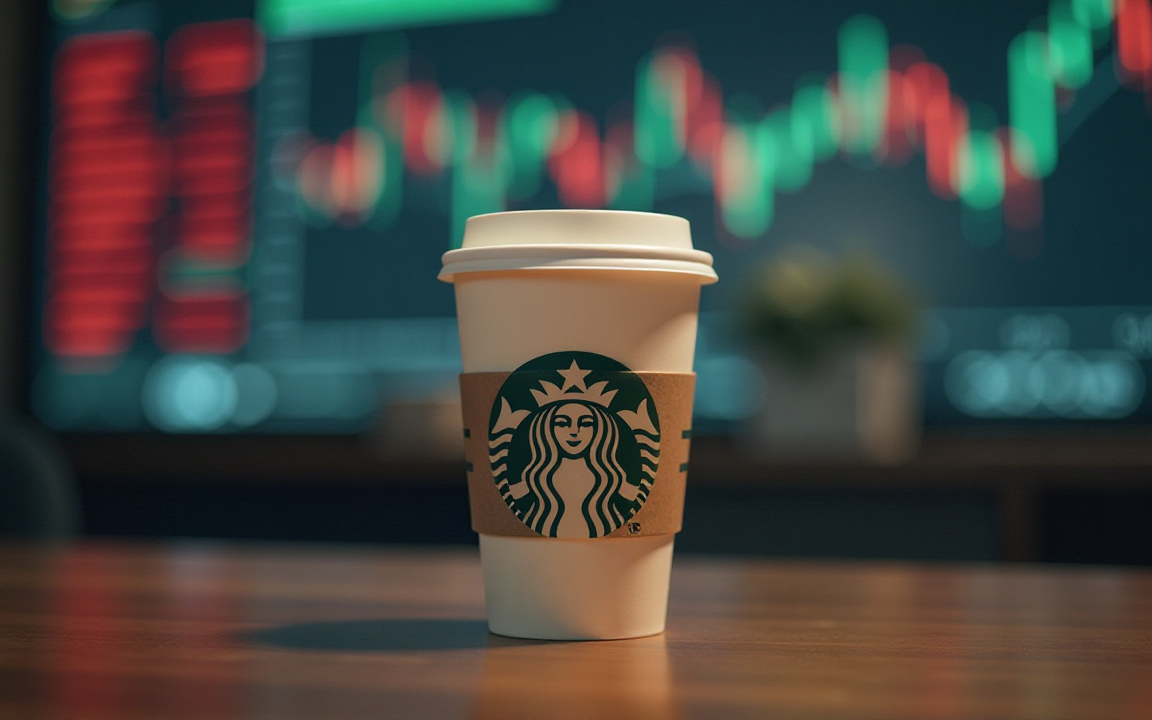After prolonged struggles with declining sales and fading customer loyalty, Starbucks is on a mission to return to the fundamentals of its coffee-shop experience, but external pressures and weaker earnings are testing investor patience.
The coffee giant reported fiscal second-quarter results on Tuesday that missed Wall Street expectations, sending its shares down 7% in premarket trading on Wednesday.
The company acknowledged that its efforts to revamp store operations and staffing had not yet translated into stronger financial performance.
“Our financial results don’t yet reflect our progress, but we have real momentum with our ‘Back to Starbucks’ plan,” CEO Brian Niccol said in a video message.
“We’re testing and learning at speed, and we’re seeing changes in our coffeehouses.”
But for many shareholders, the earnings report was a stark reminder of the challenges facing the brand, with margins shrinking for five straight quarters, falling 590 basis points in the second quarter reported on Tuesday.
Global same-store sales fell 1% in the quarter, driven by a 2% drop in transactions.
The US market, where Starbucks generates a significant portion of its revenue, saw a 4% decline in visits, dragging same-store sales down by 2%.
China, its second-largest market, posted flat same-store sales.
Efforts to streamline operations see mixed early results
As part of its turnaround efforts, Starbucks has focused on improving the efficiency of its stores, particularly in handling mobile and digital orders.
Niccol noted that new order-sequencing algorithms reduced wait times by an average of two minutes in test locations.
However, the company has opted to pause the rollout of certain equipment, such as cold-press and cold-brew machines, after determining that staffing changes had a more immediate effect on performance.
Starbucks has also delayed the deployment of other prep-focused equipment, signaling a strategic shift in how it approaches in-store improvements.
These moves suggest the company is prioritizing targeted operational adjustments over costly investments in machinery.
Tariff risks and shifting consumer preferences loom large
Starbucks’ leadership also pointed to global trade tensions as a looming risk to margins.
The company sources coffee from 28 countries, with a majority coming from Latin America.
CFO Cathy Smith said that while its hedging strategies provide some insulation from volatile commodity prices, escalating tariffs could still impact raw coffee costs, which make up 10% to 15% of its total product and distribution expenses.
“We expect that the balance of this fiscal year will bring some challenges as we navigate a dynamic macroeconomic environment,” Starbucks said in a regulatory filing.
The company added that it is actively monitoring the situation and working to offset potential financial impacts.
Meanwhile, competition from smaller, nimbler coffee chains appears to be eating into Starbucks’ dominance.
According to Placer.ai, foot traffic at Starbucks locations fell 0.9% year-over-year in the first quarter, while overall coffee chain visits rose 1.8%.
Much of that gain was driven by growth at rivals such as Dutch Bros, Scooter’s Coffee, and 7 Brew Coffee, which market themselves as fun and affordable alternatives to Starbucks’ more traditional offerings.
Analysts warn of slow recovery and investor fatigue
Despite Starbucks’ optimism, Wall Street remains cautious.
Goldman Sachs downgraded Starbucks to Neutral from Buy, adjusting its price target to $85 from $103.
Morgan Stanley, which maintains an “overweight” rating, said the strategy remains sound, but the results were a reminder that the turnaround will take time.
“Patience may be limited in this market,” analysts at the bank wrote. It has a price target of $95 for the stock.
RBC Capital Markets flagged elevated coffee prices and tariffs as risks to margins, while TD Cowen projected a more balanced recovery beginning in 2026.
“Elevated coffee prices and potential tariffs could be material headwinds to margins at some point over the next few quarters,” analysts at RBC said.
Jefferies, which rates the stock a “hold” and has the lowest target of $75, said there are still “no signs of meaningful US same-store sales improvement,” and that cultural and operational challenges will take time to resolve.
The tepid response from investors underscores the difficulty Starbucks faces in executing a complex reset while navigating economic headwinds.
Whether the “Back to Starbucks” approach can revive growth and restore investor confidence remains to be seen.
The post Starbucks (SBUX) stock dips on Q2 miss: analysts warn of slow recovery, tariff risks appeared first on Invezz

